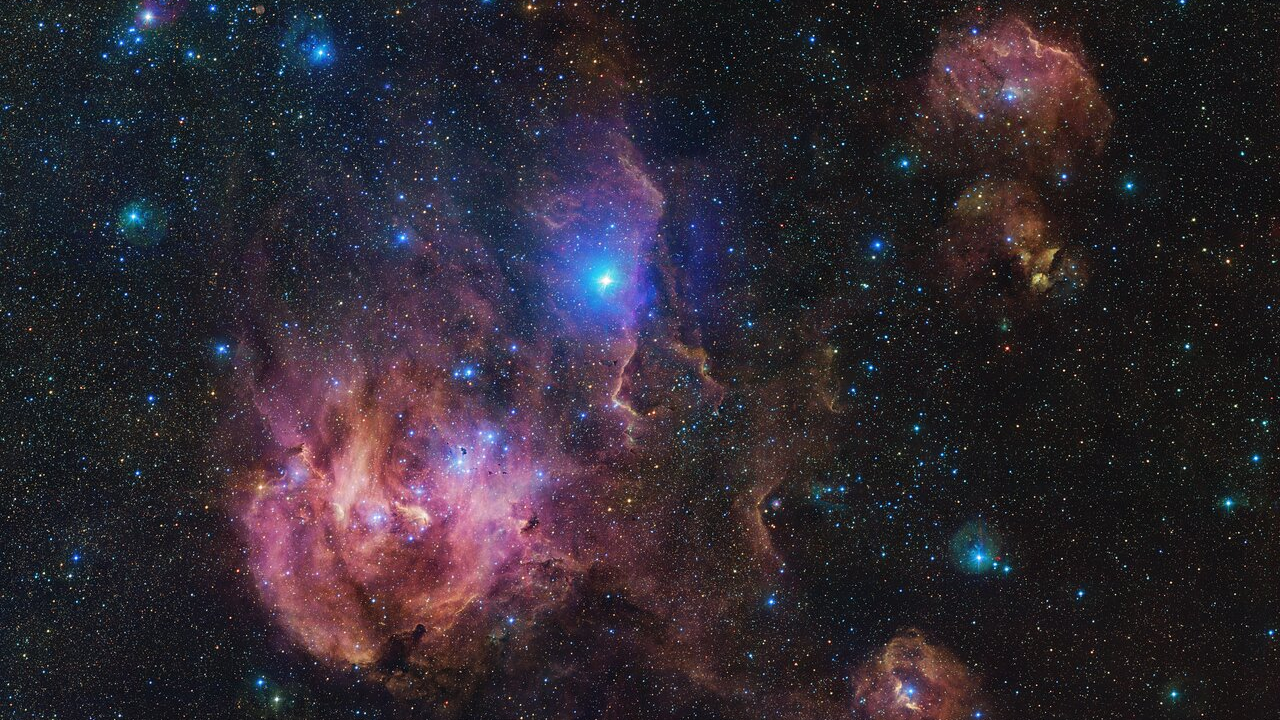Distant nebula looks like fleeing turkey in festive new Very Large Telescope photo
The star-hatching 'Running Chicken Nebula' shines brightly in red, pink and blue in the image.

Pass the cranberry sauce! A distant star-forming nebula looks like a turkey fleeing a cosmic Christmas dinner in a new telescope image.
The festive photo, taken by the European Southern Observatory's (ESO) Very Large Telescope (VLT) in Chile, features the star-hatching clouds of gas and dust that comprise the nebula IC 2944, located around 6,500 light-years from Earth. IC 2944 has a distinctly fowl-like appearance, so astronomers have nicknamed it the "Running Chicken Nebula."
In the stunning new 1.5-billion-pixel VLT image, the wispy gas and dust tendrils of the nebula glow in red, pink and orange, punctuated by bright blue stars like lights shining on a Christmas tree.
Related: Watch the 'Christmas Tree Cluster' twinkle in X-rays (video)
The Running Chicken Nebula is about 71 light-years wide and lies toward the constellation of Centaurus. It contains several separate regions, all of which are present in the new image , which covers a patch of the sky as wide as 25 full moons. The brightest region, which appears as the rear of this cosmic fowl, is known as IC 2948. This area is stuffed with bright gas and dust "plumage" and punctuated with bright blue light from hot young stars.
These stars, which are spread through the rest of the nebula as well, are carving this cosmic chicken by emitting vast amounts of ultraviolet radiation, which disperses gas and dust and thus helps to curtail further star formation. But some regions of the Running Chicken — known (no joke!) as Bok globules — are resisting this high-energy radiation and can be seen as dark, dense pockets of gas and dust sprinkled around the nebula.
Further up the celestial chicken is a bright, vertical pillar-like structure called IC 2944, which appears almost like a chicken wing in the process of flapping. Atop IC 2944 is the twinkling star Lambda Centauri, which is closer to Earth than the Running Chicken Nebula at just 470 light-years away. The star is so bright that it's visible from Earth with the naked eye.
Breaking space news, the latest updates on rocket launches, skywatching events and more!
In the upper right of the image, two emission nebulas — regions of super-hot ionized gas — called Gum 39 and Gum 40 make up the head of the Running Chicken. A further emission nebula, Gum 41, can be seen to the lower right of the image, forming the foot of the cosmic chicken.
Completing the new image is a sprinkling of white and blue stars that resemble falling flakes of snow, each one as unique, individual and complex as an actual snowflake.

Robert Lea is a science journalist in the U.K. whose articles have been published in Physics World, New Scientist, Astronomy Magazine, All About Space, Newsweek and ZME Science. He also writes about science communication for Elsevier and the European Journal of Physics. Rob holds a bachelor of science degree in physics and astronomy from the U.K.’s Open University. Follow him on Twitter @sciencef1rst.
